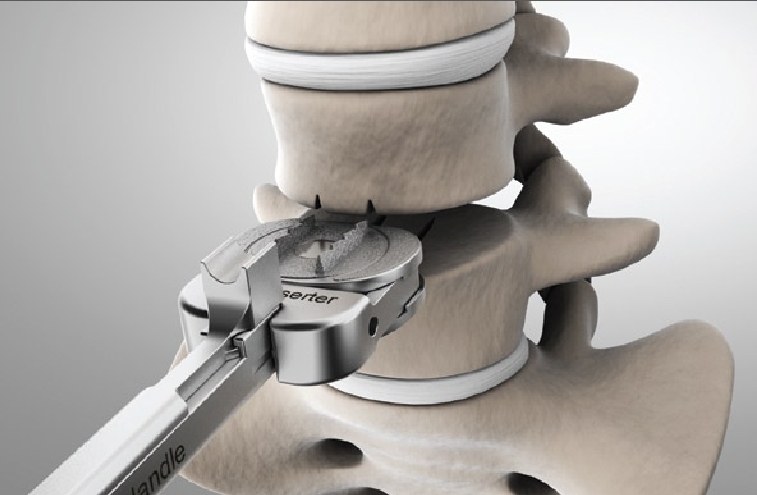doi: 10.3390/medicina59050860.
1
, Ken Nagahama
2
, Yuichiro Abe
3
, Yoshinori Hyugaji
2
, Daisuke Ukeba
1
, Tsutomu Endo
1
, Takashi Ohnishi
1
, Katsuro Ura
1
, Hideki Sudo
1
, Norimasa Iwasaki
1
, Masahiko Takahata
1
Affiliations
Affiliations
- 1 Department of Orthopaedic Surgery, Hokkaido University Hospital, Sapporo 060-8638, Hokkaido, Japan.
- 2 Department of Orthopaedic Surgery, Sapporo Endoscopic Spine Surgery Clinic, North-16, East-16, Higashi-ku, Sapporo 065-0016, Hokkaido, Japan.
- 3 Department of Orthopaedic Surgery, Eniwa Hospital, Eniwa 061-1449, Hokkaido, Japan.
Item in Clipboard
Katsuhisa Yamada et al.
Medicina (Kaunas).
.
Display options
Format
doi: 10.3390/medicina59050860.
Authors
1
, Ken Nagahama
2
, Yuichiro Abe
3
, Yoshinori Hyugaji
2
, Daisuke Ukeba
1
, Tsutomu Endo
1
, Takashi Ohnishi
1
, Katsuro Ura
1
, Hideki Sudo
1
, Norimasa Iwasaki
1
, Masahiko Takahata
1
Affiliations
- 1 Department of Orthopaedic Surgery, Hokkaido University Hospital, Sapporo 060-8638, Hokkaido, Japan.
- 2 Department of Orthopaedic Surgery, Sapporo Endoscopic Spine Surgery Clinic, North-16, East-16, Higashi-ku, Sapporo 065-0016, Hokkaido, Japan.
- 3 Department of Orthopaedic Surgery, Eniwa Hospital, Eniwa 061-1449, Hokkaido, Japan.
Item in Clipboard
Display options
Format
Abstract
Background and Objectives: Although full endoscopic lumbar discectomy with the transforaminal approach (FED-TF) is a minimally invasive spinal surgery for lumbar disc herniation, the lumbosacral levels present anatomical challenges when performing FED-TF surgery due to the presence of the iliac bone. Materials and Methods: In this study, we simulated whether FED-TF surgery could be safely performed on a total of 52 consecutive cases with L5-S1 or L5-L6 disc herniation using fused three-dimensional (3D) images of the lumbar nerve root on magnetic resonance imaging (MRI) created with artificial intelligence and of the lumbosacral spine and iliac on computed tomography (CT) images. Results: Thirteen of the fifty-two cases were deemed operable according to simulated FED-TF surgery without foraminoplasty using the 3D MRI/CT fusion images. All 13 cases underwent FED-TF surgery without neurological complications, and their clinical symptoms significantly improved. Conclusions: Three-dimensional simulation may allow for the assessment from multiple angles of the endoscope entry and path, as well as the insertion angle. FED-TF surgery simulation using 3D MRI/CT fusion images could be useful in determining the indications for full endoscopic surgery for lumbosacral disc herniation.
Keywords:
3D MRI/CT fusion imaging; L5–S1 lumbar disc herniation; artificial intelligence; endoscopic surgery simulation; full endoscopic lumbar discectomy; transforaminal approach.
Conflict of interest statement
The authors declare no conflict of interest.
Figures

Figure 1
Three-dimensional (3D) fusion images of…
Figure 1
Three-dimensional (3D) fusion images of lumbosacral nerve root-herniated disc (magnetic resonance imaging)–spine-ilium (computed…
Figure 1
Three-dimensional (3D) fusion images of lumbosacral nerve root-herniated disc (magnetic resonance imaging)–spine-ilium (computed tomography) in the (a) postero-anterior view, (b) lateral view, and (c) postero-anterior view without posterior spinal elements. The red arrow indicates a herniated disc.

Figure 2
Simulation of full endoscopic lumbar…
Figure 2
Simulation of full endoscopic lumbar discectomy with the transforaminal approach (FED-TF) at the…
Figure 2
Simulation of full endoscopic lumbar discectomy with the transforaminal approach (FED-TF) at the L5–S1 level using three-dimensional (3D) fusion imaging. The content circled in red is the Kambin’s triangle at the L5–S1 level. The 3D fusion image was rotated along the axial plane of the L5 lower endplate to the (a) approach side up to the angle where Kambin’s triangle maximally appears and (b,c) rotated cephalad so that the ilium did not interfere with Kambin’s triangle when checking whether the herniated disc could be reached. (d,e) A 3 mm diameter endoscopic virtual axis (light blue bar) was placed according to the FED-TF approach to assess the trajectory.

Figure 3
The Japanese Orthopedic Association (JOA)…
Figure 3
The Japanese Orthopedic Association (JOA) score for lumbar spinal disorders (0–29, with higher…
Figure 3
The Japanese Orthopedic Association (JOA) score for lumbar spinal disorders (0–29, with higher scores representing better status) and scores of low back pain and leg pain (visual analog scale [VAS]; 0–100 mm, with higher scores representing worse pain) preoperatively and at 1 day and 1 month postoperatively. Values are in mean ± standard deviation. * p < 0.05.

Figure 4
Case presentation of a 28-year-old…
Figure 4
Case presentation of a 28-year-old woman with L5–S1 disc herniation. ( a )…
Figure 4
Case presentation of a 28-year-old woman with L5–S1 disc herniation. (a) Preoperative magnetic resonance imaging (MRI); (b) simulation of full-endoscopic lumbar discectomy with the transforaminal approach using three-dimensional fusion imaging (light blue bar: virtual axis of endoscope); (c) postoperative magnetic resonance image.
References
-
-
Hermantin F.U., Peters T., Quartararo L., Kambin P. A prospective, randomized study comparing the results of open discectomy with those of video-assisted arthroscopic microdiscectomy. J. Bone Jt. Surg. Am. 1999;81:958–965. doi: 10.2106/00004623-199907000-00008.
–
DOI
-
-
-
Maroon J.C. Current concepts in minimally invasive discectomy. Neurosurgery. 2002;51:S2–S137. doi: 10.1097/00006123-200211002-00019.
–
DOI
-
Grant support
This research received no external funding.

